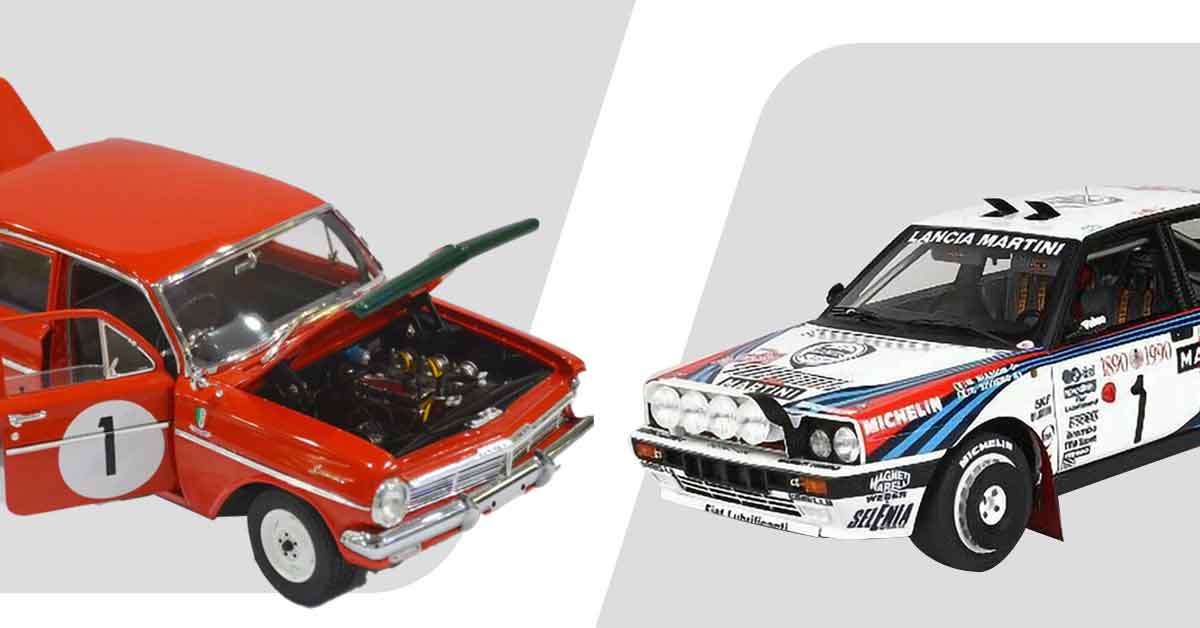Diecast and Resin are the two most common materials used to make the bodies of your favourite models. Collectors frequently debate which material is best for creating detailed replicas of their favourite car models. However, the answer could be that they are both beneficial for different reasons. In this blog, you will get to know more about each material to help you make your own decision about which is best for you.
Summary
- Difference Between Diecast and Resin Model Car
- Watch Our YouTube video
The Differences Between Diecast and Resin
The primary distinction between diecast and resin is the manufacturing process. Diecasting is the process of casting Zinc Alloy, whereas resin casting is the process of casting resin composite. Keep reading to learn more about the differences between the two materials.
Diecast

Diecast models are made of metal, which allows them to be a bit stronger and to have lots of opening panels. Models are produced by using the die casting method of putting molten lead or zinc alloy in a multi-piece mould to produce a particular shape. The alloy material allows it to be stronger, which means it can have more opening panels, but the details are not as crisp as they are with resin.
One disadvantage of diecast car models is that they cannot produce parts as small as resin plastic. This results from the mold-making process, which restricts the ability of diecast metal in terms of extremely small parts.
Advantages of Diecast:
- Allows for functional parts; such as opening doors and sunroofs
- Stronger and heavier
Disadvantages of Diecast:
- Typically mass-produced making them more common
- Prone to deterioration which can lead to blistering, distortion, and cracking
Shop our Diecast collection here
Resin

Resin is a resilient, flexible substance that is easily molded into practically any shape or size. It is produced by heating liquid resin under intense pressure, and it is frequently used for collectible or display items. The resin is then forced across a plastic mould, where it forms an object. When compared to injection-molded plastic figures, which are typically made in large quantities, they are typically created in smaller quantities. And as a result, resin vehicles are more valuable and collectible than diecast ones.
A resin car is by far a collector’s top choice, as it offers a larger variety and a more detailed version of the actual car.
Advantages of Resin:
- Favoured by a lot of collectors because of their limited manufacturing runs
- Fine and smooth texture makes it difficult for paint to peel off
Disadvantages of Resin:
- No opening parts
- Weaker and lighter
It is obvious that resin offers numerous advantages over diecast cars, including more collectability, sharper detailing, and superior paintwork. However, each has its own unique charm and continues to be a major player in the model car market. Both materials make great scale model cars and produce superb models that will improve our collections. And the most important thing is to get the car you actually want!
Watch our video!
In this video, Nic and BJ focused on the differences between the two (2) main materials used today in making detailed model vehicles.
Scale model cars shown in the video:
- BBR Lancia Delta Integrale: https://bit.ly/34wLaqE
- MR Collection Lamborghini Huracane: https://bit.ly/37BtP1V
- Classic Carlectables Holden HE Special: https://bit.ly/33gl1Lr
Do you want a certain topic reviewed? You are always welcome to contact us at hh@hearnshobbies.com!
Take a moment to subscribe to our YouTube channel so you can keep up with all of our latest videos. Also, make sure to follow us on Facebook, Instagram, Twitter, and Twitch!
 is here! Shop now, pay later in 4 easy installments
is here! Shop now, pay later in 4 easy installments

